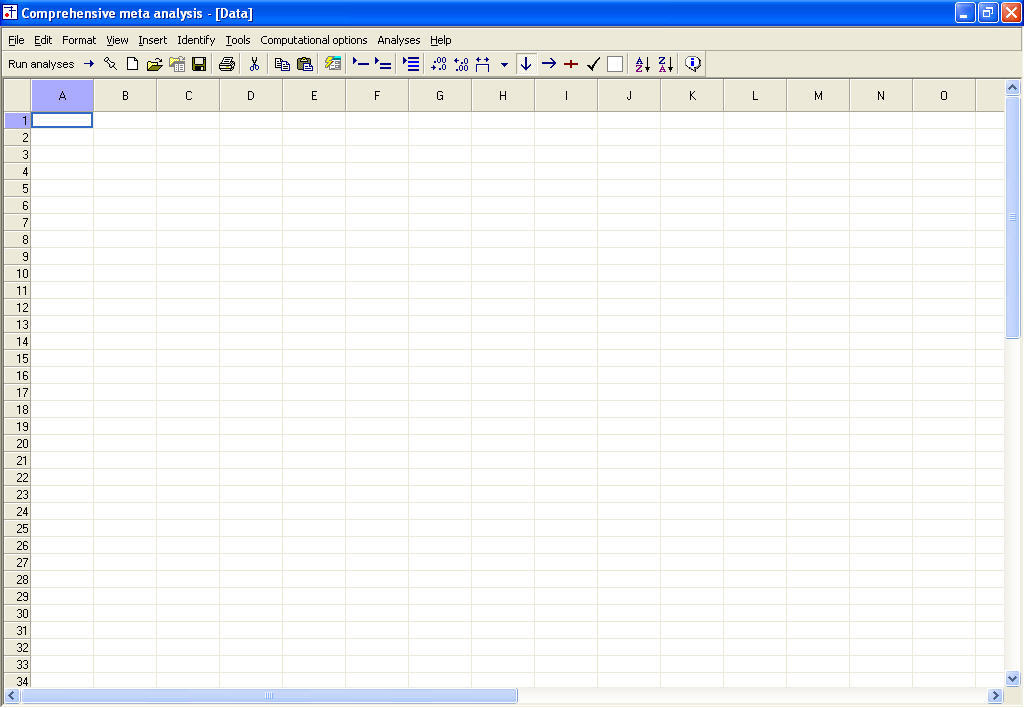
As an example, consider a study of the neural support of translating orthography to phonology, probed with visual stimuli by Pinho et al. Indeed, we lack the tools to parse the text in articles and reliably identify those that relate to equivalent or very similar contrasts. A consequence is that, as we will show, their results are harder to control outside of well-defined and frequently-studied psychological concepts.Ĭurrently, an automated meta-analysis cannot cover all studies that report a particular functional contrast (contrasting mental conditions to isolate a mental process, Poldrack et al., 2011). They cannot model nuances across studies because they rely on in-sample statistical inference and are not designed to interpolate between studies that address related but different questions, or make predictions for unseen combinations of mental processes. Yet, current meta-analysis approaches model all studies as asking the same question. In addition, studies are diverse in many ways: they investigate different mental processes, using different terms to describe them, and different experimental paradigms to probe them ( Newell, 1973). Indeed, only 30% of the terms contained in a neuroscience ontology or meta-analysis tool are common to another (see Table 1). The lack of a universally established vocabulary or ontology to describe mental processes and disorders is a strong impediment to meta-analysis ( Poldrack and Yarkoni, 2016). But closely related terms can lead to markedly different meta-analyses ( Figure 1).

To automate the selection of studies, the common solution is to rely on terms present in publications. In what follows, we focus on automated meta-analysis.
#COMPREHENSIVE META ANALYSIS VERSION 2 MANUAL#
However, manual meta-analyses are not scalable, and the corresponding degrees of freedom are difficult to control statistically. In principle, studies can be manually annotated as carefully as one likes. Choosing which studies to include in a meta-analysis can be challenging. However, they can only address neuroscience concepts that are easy to define. Existing meta-analysis methods focus on identifying effects reported consistently across the literature, to distinguish true discoveries from noise and artifacts. Automating CBMA methods across the literature, as in NeuroSynth ( Yarkoni et al., 2011), enables large-scale analyses of brain-imaging studies, giving excellent statistical power. Coordinate-Based Meta-Analysis (CBMA) methods ( Laird et al., 2005 Wager et al., 2007 Eickhoff et al., 2009) assess the consistency of results across studies, comparing the observed spatial density of reported brain stereotactic coordinates to the null hypothesis of a uniform distribution. Meta-analyses can give objective views of the field, to ground a review article or a discussion of new results. In addition, such a task is fundamentally difficult due to the many different aspects of behavior, as well as the diversity of the protocols used to probe them. There are too many studies to manually collect and aggregate their findings.

But compiling an answer to a specific question from this impressive number of results is a daunting task. Finding consistent trends in the knowledge acquired across these studies is crucial, as individual studies by themselves seldom have enough statistical power to establish fully trustworthy results ( Button et al., 2013 Poldrack et al., 2017).

IntroductionĮach year, thousands of brain-imaging studies explore the links between brain and behavior: more than 6000 publications a year contain the term ‘neuroimaging’ on PubMed. The resulting meta-analytic tool,, can ground hypothesis generation and data-analysis priors on a comprehensive view of published findings on the brain. We capture the relationships and neural correlates of 7547 neuroscience terms across 13 459 neuroimaging publications.

This approach handles text of arbitrary length and terms that are too rare for standard meta-analysis. Our multivariate model predicts the spatial distribution of neurological observations, given text describing an experiment, cognitive process, or disease. We propose a new paradigm, focusing on prediction rather than inference. Thus, large-scale meta-analyses only tackle single terms that occur frequently. Existing meta-analysis methods perform statistical tests on sets of publications associated with a particular concept. The variety of human neuroscience concepts and terminology poses a fundamental challenge to relating brain imaging results across the scientific literature. Reaching a global view of brain organization requires assembling evidence on widely different mental processes and mechanisms.


 0 kommentar(er)
0 kommentar(er)
